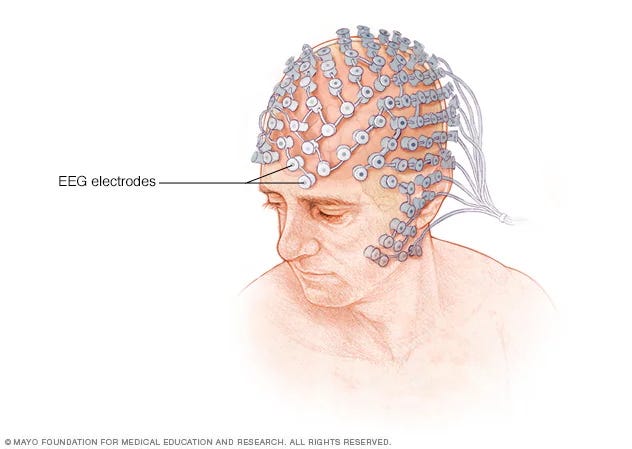
Your brain on ChatGPT—my notes on the study
The first brain-scan study of AI users reveals the cognitive cost of convenience.

When I was a kid growing up in the ’80s and ’90s, there was an unforgettable anti-drug commercial. It opened with ominous music and a sizzling frying pan. A man says, “This is drugs,” then cracks an egg and drops it into the pan. “This is your brain on drugs. Any questions?”
Simple. Stark. Burned into memory.
https://medium.com/media/270c37c4ac1d1b32d60281639007d387/href
That same imagery comes to mind when I think about how we’re using AI today. Except now, the frying pan isn’t heroin — it’s ChatGPT. And instead of cooking our brains chemically, we’re numbing them cognitively — slowly, through the gradual atrophy of effort and engagement.
Until now, most of these warnings were speculative—cautionary opinions, gut feelings, and philosophical theories. But a new study out of MIT and Wellesley College has finally scanned what’s happening in our brains when we rely on AI — and what they found isn’t just cause for concern — it’s a dire warning.
For several years now, the debate around large language models has been split. Some see AI as a harmless productivity booster, maybe even a liberator of human potential. Others — myself included — see a quieter threat — not a robot uprising, but something more insidious. The slow erosion of critical thinking and autonomy. A fading ability to wrestle with our own ideas.
And now, thanks to this new study, we finally have hard evidence. EEG scans. Neural patterns. Quantified data. And what they found confirms what many of us have feared. The cost of technological convenience is cognitive decay.

The hidden cost of outsourcing thought
In the study, 54 participants were split into three groups. One wrote essays using only their brains, another used a search engine, and the third used GPT-4o. They completed four writing sessions, while researchers tracked brain activity and later tested memory and recall.
The takeaway? Those using AI weren’t just mentally idle — they were neurologically disengaged.
The research team coined the term “cognitive debt” to describe this effect. Like financial debt, it compounds. The more you lean on AI to do your thinking, the harder it becomes to think independently later.
Your brain on autopilot
EEG scans revealed that participants who wrote unaided showed high engagement in the alpha and beta brainwave bands — signs of active processing, attention, and cognitive effort.

Those using ChatGPT? Barely a flicker. Their brain activity looked less like creating — more like passive consumption. Think “writing screenplay” versus “re-watching Netflix for the fifteenth time.”
After each session, participants were asked to recall what they had written.
Those who wrote manually remembered their words with ease — nearly 89% could recall a sentence from their essays minutes later. Those who used Google stumbled a bit but still managed, with the same 88.9% success rate.
But the contrast was stark for GPT users. A staggering 83.3% could not recall a single sentence. They read their essays like strangers — familiar in form, foreign in authorship.
That’s not co-writing. That’s ghostwriting with your name on the byline.
The illusion of efficiency
Yes, tools like ChatGPT are fast. You go from prompt to polished paragraph in seconds. But that smoothness is deceptive. It hides a growing fragility.
Interestingly, participants who started writing before invoking ChatGPT retained more mental engagement than those who began with the AI. It’s a quiet reminder — begin with your own imperfect ideas. Use AI as a tool — not as a substitute for thinking.
But too many are doing the reverse. They let the machine lead — and over time, our authentic voice and ideas erode.
Polished words, hollow minds
This isn’t just about writing. It’s about cognition itself. Memory is forged in friction. Understanding is shaped by resistance. Remove those, and you’re left with sentences that sound smart but signify nothing.
“Empower your future.”
“Innovate at scale.”
“In today’s dynamic landscape…”
You’ve read them. Probably written them. These are words that pass the scan but fail the soul test.
We keep hearing that LLMs “democratize intelligence.” But what’s actually being democratized is fluency without foundation. A shortcut to sounding articulate — without the scaffolding of thought underneath.
It’s the intellectual version of lip-syncing. You move your mouth, but someone else provides the voice.
We start to mistake sounding smart for being smart.
What this means for education
Educators should take note. As a university instructor, I’ve seen how easily students outsource their thinking.
This isn’t just about plagiarism — it’s about the death of personal authorship. The intimate relationship we once had with our own thoughts is being sacrificed for convenience.
If students can not remember what they wrote, can not recognize their tone, and can’t trace the thoughts back to themselves, what are we teaching them? That clarity is something to be delivered, not discovered?
In the study, the LLM users were no less intelligent. They were just removed from the mental struggle. And that struggle is the learning. That’s where ideas take root. Not in the polish, but in the mental pushback.
Beyond writing
While the study focused on essay writing, the implications stretch far beyond the page.
What about programming? Medicine? Law? Even my own fields — design and education. I suspect we’d see the same pattern. The more we lean on AI, the further we drift — from the problems we’re meant to engage with, and from the responsibility of solving them ourselves.
It’s not just the output that matters. It’s the process — the thinking behind the thinking. When that gets outsourced, what’s left isn’t authorship. It’s a shallow imitation.
Think first. Then type.
This study doesn’t suggest we abandon AI. It suggests we reposition it. As an editor, not an author.
Let the machine help you refine. Let it challenge your phrasing. But don’t let it do the thinking. Because that’s not streamlining — that’s surrender.
And when you surrender your thinking, you don’t just lose your words — you lose the part of you that gave them meaning.
Don’t miss out! Join my email list and receive the latest content.
Your brain on ChatGPT-my notes on the study was originally published in UX Collective on Medium, where people are continuing the conversation by highlighting and responding to this story.